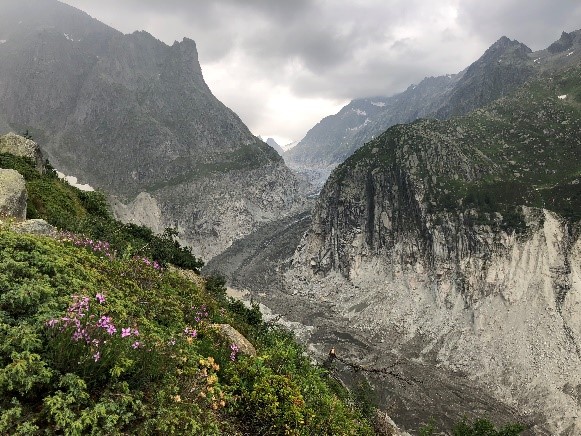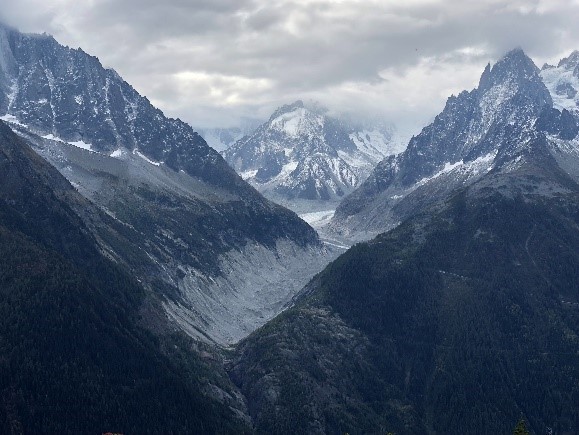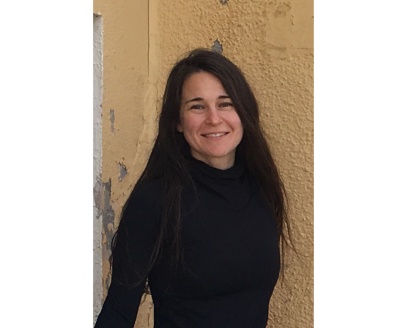Shelly Arreguin
What do you find fascinating/challenging about energy research and the energy transition?
The extent of climate change varies in its effects on different regions of the world (glacial melt, shifting of plant/animal ranges, wildfires, more extreme weather, sea levels rising, longer periods of drought, etc...). While these variances are diverse in nature, it can easily be deduced that organizing ourselves together within the global community to limit anthropogenic climate change is of universal importance. This undoubtedly requires substantial changes to the current energy infrastructure (that is heavily fossil fuel driven) as well as dramatic transformations in human behavior patterns. There is no single solution that can fully address the associated challenges of the global energy transition, and thus necessitates a multi-level understanding within: science, society, policy as well as in industrial settings. The pertinent need to develop and implement solutions that will fulfill climate ambitions with a well below 2°C scenario is arguably one of the greatest challenges of our time. There is nothing else I vision is of more importance than the maintenance of our health, and the health of this planet, and this is the fuel that drives me into this field.
What are your research topics and what is your role within the SCCER Mobility?
I have an incredibly broad science and engineering educational background: Chemistry, Ecology, Evolution and Conservation Biology, Nanotechnology and Materials Science and Engineering. However, the forefront of my focus has involved developing, testing and implementing novel material solutions to contribute to sustainable and safe business practices across various energy sectors (nuclear, building efficiency and various aspects of mobility). I work extensively to understand the associated chemistry and material properties of polymers, ceramics and composite materials in contribution to these applications. I also have quite the love affair with boron (the most fascinating of all elements) and inadvertently incorporate it into my material processes. Within the SCCER, I investigate advanced polymer composite manufacturing in order to reduce vehicular weight and thus energy consumption and environmental impact in mobility. I also work to integrate the various teams across Switzerland within SCCER to drive forward the progress of our research endeavors.
Why did you become a scientist?
In a large part, I was born an explorer constantly seeking to understand and manipulate natural patterns, thus, I am as much an engineer as I am a scientist. I admit, I did not have the support of my relatives to pursue a career in science and engineering. Despite this reality, it was impossible for me to deny myself the direction in which I was naturally magnetized. In which case, I tend to believe that we do not necessarily have much control over what so happens to be the things in which we so strongly gravitate towards... It is perhaps, I did not so much choose this path, but rather it was inevitable, and simply a derivation of my combined genetics and life experiences.
What are your main career highlights?
Working in the various energy sectors has inherently involved my extensive collaboration and interaction with the international community. I have worked at several national labs in different countries, as well as within various academic institutions on multiple continents. Integration at this level has allowed me to become intimately familiar in efficiently sorting and identifying key thematic relationships to share vision across boundaries, with the reduction of fossil fuels being the constant theme in my career.My experiences in multi-national, cross-disciplinary arenas has allowed me to adapt my communication skills to deliver/interpret information to/from a diverse array of audiences. This in part can also be attributed to my efforts in communicating complex topics to the general public through various outreach activities. Additively, during my nuclear investigations I became heavily involved in policy, as this topic is as much scientific as it is political. I therefore spent time in Washington DC personally connecting with members of Congress regarding upcoming science policy initiatives. These experiences have allowed me the capability to successfully engage in various topics of high complexity across a wide range of audiences with tailored communication. My career has therefore been rather integral in regards to research, policy, communication and business.
How do you think mobility will change in the next 10 years and what role will renewable energy play?
In its present state, the mobility sector suffers from various entities: pollution, oil dependence, congestion, accidents, noise, consumption of space... While it is impossible to finitely state what the future of mobility holds, I like to think it will address many of its current issues by migrating towards ride sharing and increasing overall energy efficiency of vehicles. This will therefore require a combination of technological and societal advancements to make this vision a reality. The proliferation of new advancements such as self driving cars and electric mobility requires sustainable forms of energy to be incorporated into the energy infrastructure, otherwise we risk running into a low tech halt. In order to keep up with the flux of the global energy transition, it is imperative to design sustainable business practices, as well as implement energy policies that will enable proliferation of emerging technologies. That said, I really hope to see more movement towards simply walking and biking to our destinations; for both reduction of greenhouse gas emissions and our personal health.
What is your "work-life-balance" recipe?
I admit, I am still working on how to best sort this out effectively... But when the mountains are not white with snow, I can be found all along the high alpine routes, crossing anywhere between 70-100 km on any given weekend. The ibex (steinbock, bouquetin, stambecco) and I tend to occupy the same territory, so during alpine running season I inadvertently spend a lot of time with these epic creatures. I ummm, do not yet know how to ski (I am aware of the irony in that), so in the winter I take on caving expeditions, as well do I have several knitting projects going at once. My best ideas often come to me during my long excursions on the Alps, which further fuels my thought processes for my work... Therefore, I reckon, it is time for me to hop on the skis...
Can you provide recommendations for young scientists wishing to pursue a career in the field of (energy) research?
We are all part of the global community and our collective actions are what dictate the stability and maintenance of this planet. In which case, I instead prefer to stress that you need not be a scientist or engineer to be a part of the epic endeavor of sustainability. I instead encourage you to observe your surroundings, question accepted understandings, think about your actions and make conscious decisions about your behavior patterns. It is not necessary that you pursure a career in research to work as a catalyst for change. You simply need to open your eyes and mind to make sustainable choices that will contribute to decreasing the effects we humans are putting on the planet. With that, I leave you with these two images as they perhaps speak louder than words... After crossing more than 2000 km of the Alps this past season, I have experienced first hand the visual effects of climate change on the plethora of glaciers I run across. How much longer do we wait, before it is too late?


Text and picture: Shelly Arreguin, January 2018
!!! This document is stored in the ETH Web archive and is no longer maintained !!!
